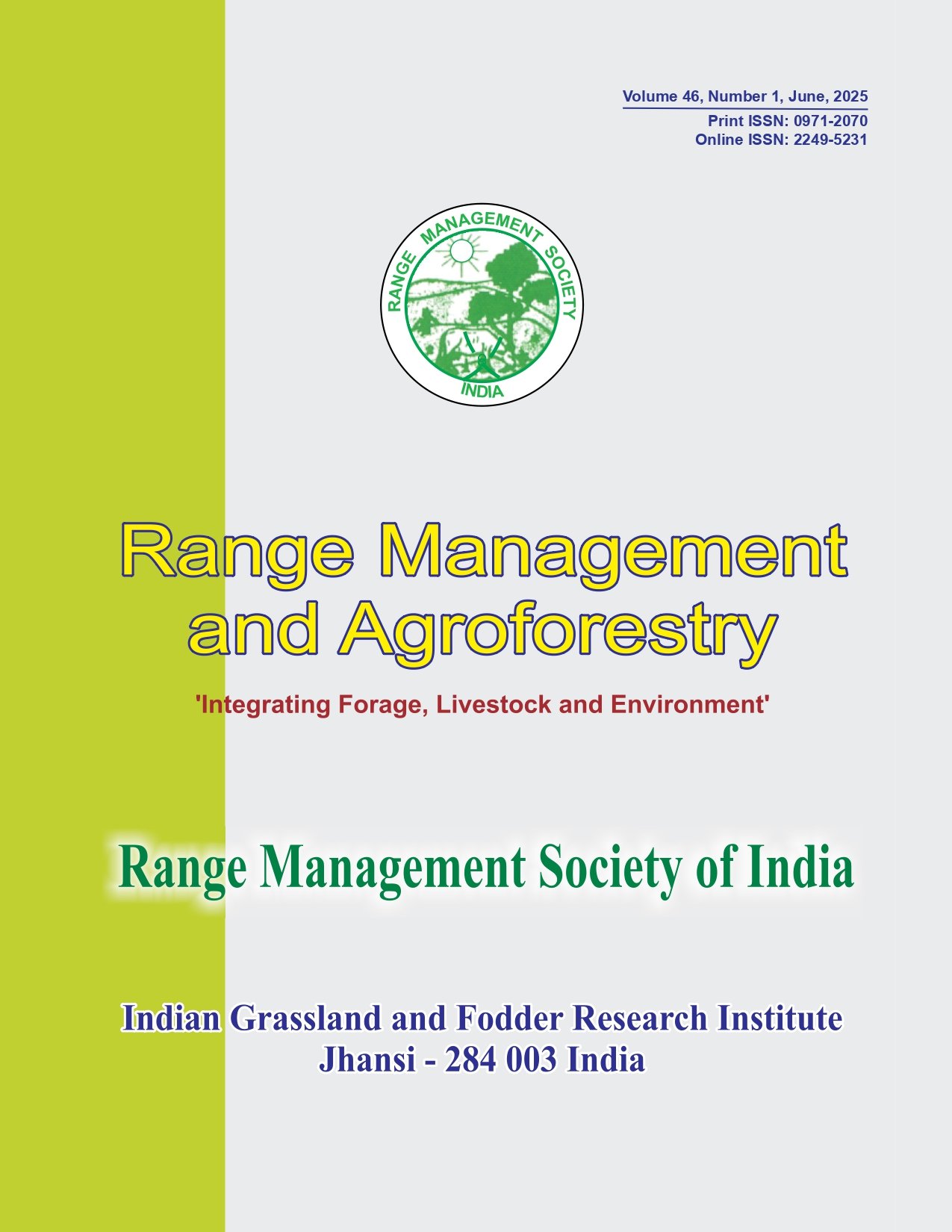Growth, yield and economics of dual purpose oats (Avena sativa L.) as affected by sowing time, cutting schedules and nitrogen levels
Keywords:
Cutting management, Dual purpose oats, Nitrogen levels, Sowing time, YieldAbstract
A field experiment was conducted for two consecutive Rabi seasons of 2016-17 and 2017-18 to study the effect of sowing time, cutting schedules and nitrogen levels on growth, yield and economics of dual purpose oats. The experiment was laid out in split plot design with three replications. The treatments of two dates of sowing (25th October and 25th November) and four cutting schedules (no cut, cut at 50, 60 and 70 DAS) were kept in main plots whereas three nitrogen levels (80, 100 and 120 kg ha-1) were kept in sub plots. Study indicated that early sown oats on 25th October recorded significantly higher values for all growth attributes at cutting and harvest, green fodder yield (36.4 t ha-1), dry fodder yield (8.0 t ha-1), grain yield (2.7 t ha-1), straw yield (6.6 t ha-1), nitrogen (154.6 kg ha-1), phosphorus (16.3 kg ha-1) and potassium (86.8 kg ha-1) uptake, net returns (Rs. 84678 ha-1) and B: C ratio (2.32) over late sown oats. Among different cutting schedules, cut at 70 DAS recorded significantly higher values for growth attributes of fodder at cutting, green fodder yield (37.8 t ha-1), dry fodder yield (8.3 t ha-1), nitrogen (154.1 kg ha-1), phosphorus (15.9 kg ha-1) and potassium (84.9 kg ha-1) uptake over other cutting schedules in descending sequence of cut at 70, 60 and 50 DAS. However, cut at 50 DAS proved significantly better in terms of net returns (Rs 96260 ha-1) and B: C ratio (2.58). No cut system registered significantly higher values for all growth parameters at harvest, grain yield (3.0 t ha-1) and straw yield (7.3 t ha-1) over rest of cutting schedules. In case of nitrogen levels, application of 120 kg N ha-1 showed significantly higher values for all growth attributes at cutting and harvest, green fodder yield (36.5 t ha-1), dry fodder yield (8.0 t ha-1), grain yield, (2.5 t ha-1), straw yield (6.2 t ha-1), nitrogen, phosphorus and potassium content and uptake, net returns (Rs. 86937 ha-1) and B: C ratio (2.33). Therefore, dual purpose oats sown on 25th October, cut at 50 DAS and fertilized with 120 kg N ha-1 recorded optimum yield and benefit cost ratio.




